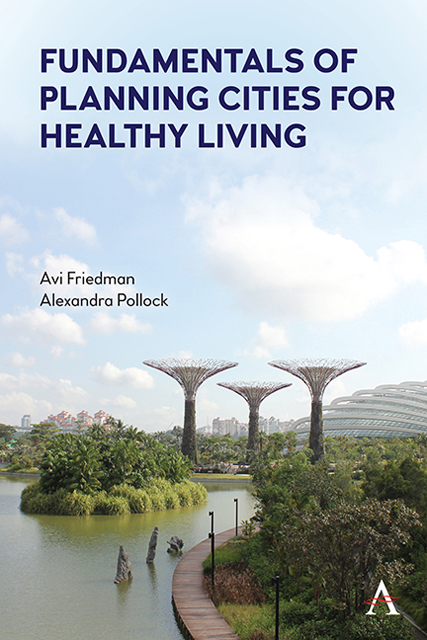Book contents
- Frontmatter
- Contents
- Preface
- Acknowledgments
- Chapter 1 The Broad View
- Chapter 2 Form, Function, and Public Health
- Chapter 3 Planning for Active Mobility
- Chapter 4 Green Open Spaces
- Chapter 5 Active Life in Winter Cities
- Chapter 6 Socializing in Communities
- Chapter 7 Food Production and Distribution
- Chapter 8 Urban Design for Healthy Aging
- Chapter 9 Public and Multi-Unit Residential Buildings and Public Health
- Chapter 10 Healthy Residences
- Chapter 11 Equitable Health Promotion
- Bibliography
- Bibliography for Case Studies
- Illustrations’ Credits
- Index
Chapter 8 - Urban Design for Healthy Aging
Published online by Cambridge University Press: 10 January 2023
- Frontmatter
- Contents
- Preface
- Acknowledgments
- Chapter 1 The Broad View
- Chapter 2 Form, Function, and Public Health
- Chapter 3 Planning for Active Mobility
- Chapter 4 Green Open Spaces
- Chapter 5 Active Life in Winter Cities
- Chapter 6 Socializing in Communities
- Chapter 7 Food Production and Distribution
- Chapter 8 Urban Design for Healthy Aging
- Chapter 9 Public and Multi-Unit Residential Buildings and Public Health
- Chapter 10 Healthy Residences
- Chapter 11 Equitable Health Promotion
- Bibliography
- Bibliography for Case Studies
- Illustrations’ Credits
- Index
Summary
The United Nations projects that by 2050, two billion people worldwide will be aged 60 years or over, many of whom will live in urban areas (United Nations (UN) 2017). In fact, as of 2015, cities were home to 43.2 percent of the elderly population (OECD 2015). While urban living is beneficial to seniors in many ways (Perek-Bialis et al. 2017), it is still important that the possible negative effects are mitigated through built environment interventions. Cities can adapt to the needs of the elderly by encouraging socialization, physical activity, and safety to name a few measures. This chapter begins with a discussion of planning interventions that can occur at the city or regional level. It then transitions into an explanation of how planners can design urban public spaces to be safe and health-promoting for the aged. It concludes at the level of the home, and how new developments can encourage aging in place. Finally, the chapter includes a case study of a housing development for seniors in El Paso, Texas, United States.
8.1 Seniors and the City
According to Mulwa and Ruedenbach (2016) cities are often associated with a sense of youthful vitality. Young people move to the heart of cities to take advantage of their walkability, nightlife, and culture. But around the world, the population is aging. Thanks to advances in healthcare and improvements in quality of life, the number of people living alone in their 80s and 90s is projected to rapidly increase (Molinsky 2020). In 1950, 205 million people were aged 60 years or over and by 2050, the United Nations projects that figure will reach two billion (United Nations (UN) 2017). It is imperative that cities are designed to enable their oldest citizens to lead independent, healthy lives. An age-friendly city is a city that enables residents to safely grow older and offers extensive opportunities for their participation in their families, neighborhoods, and civil society (Fitzgerald and Caro 2016).
According to Perek-Bialis et al. (2017) overall, living conditions are better for older people living in cities than for their rural counterparts.
- Type
- Chapter
- Information
- Fundamentals of Planning Cities for Healthy Living , pp. 95 - 108Publisher: Anthem PressPrint publication year: 2022

